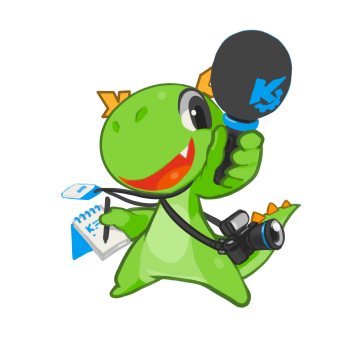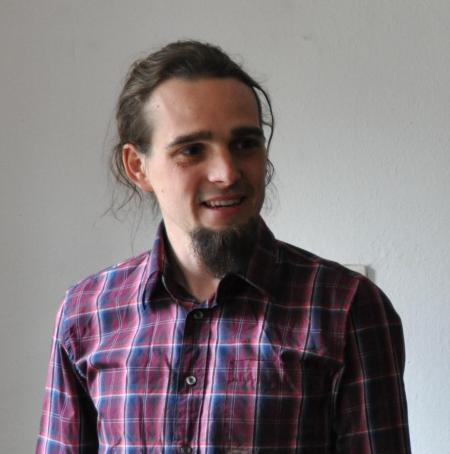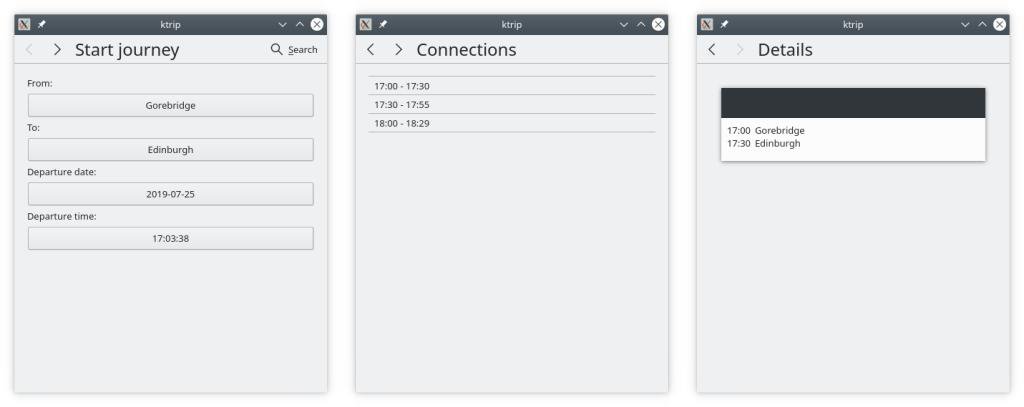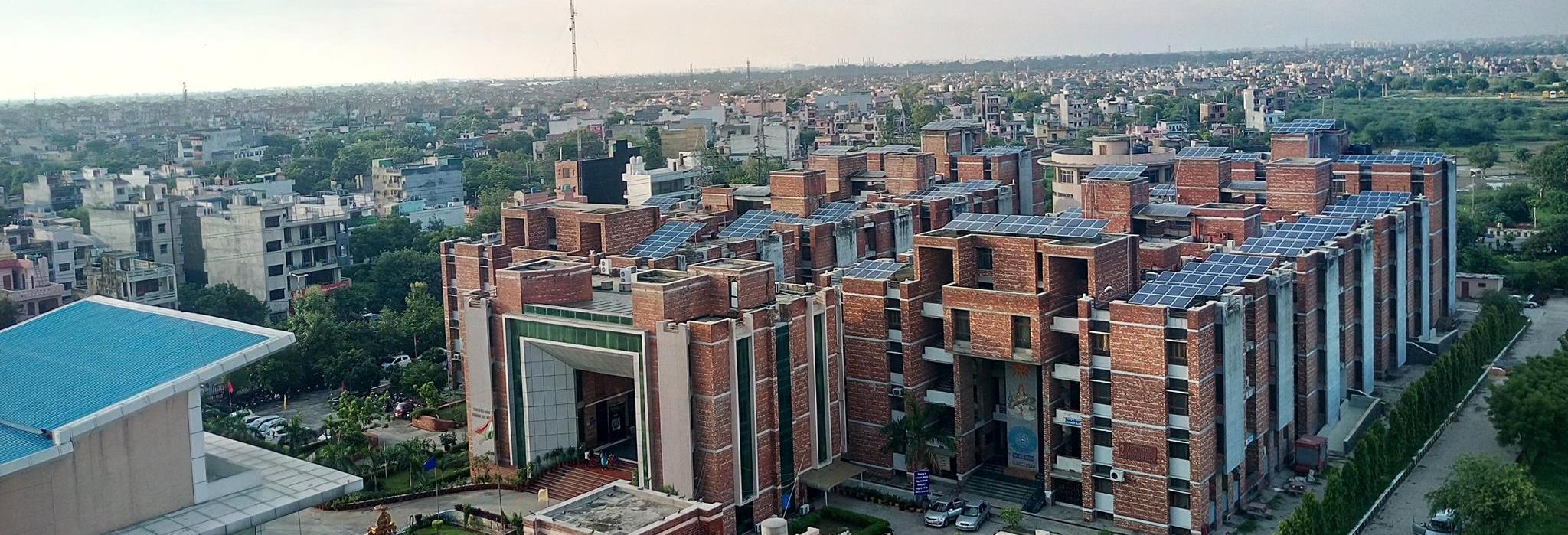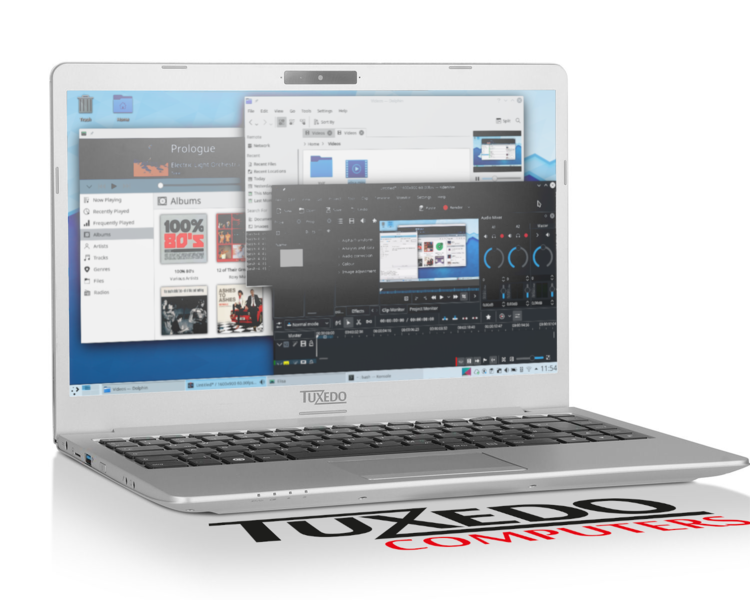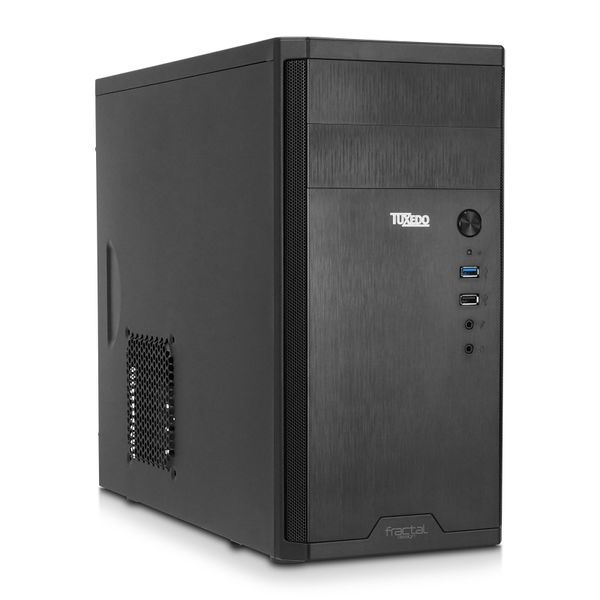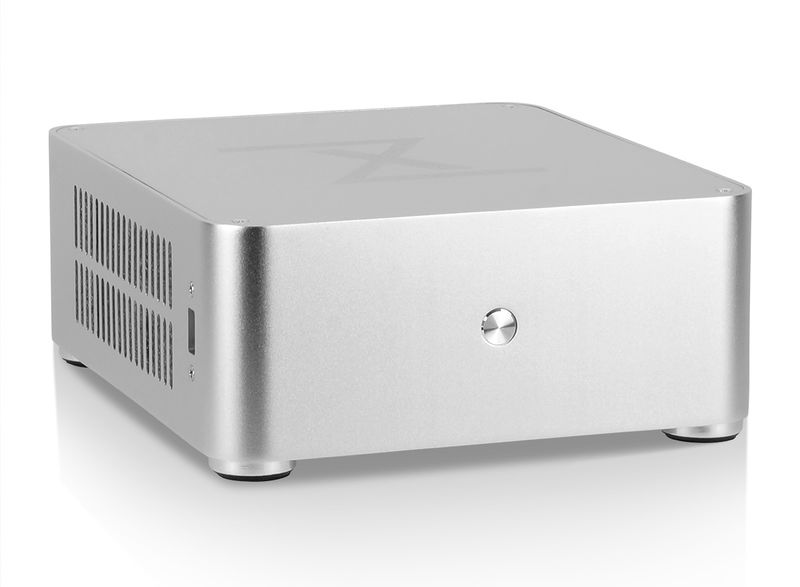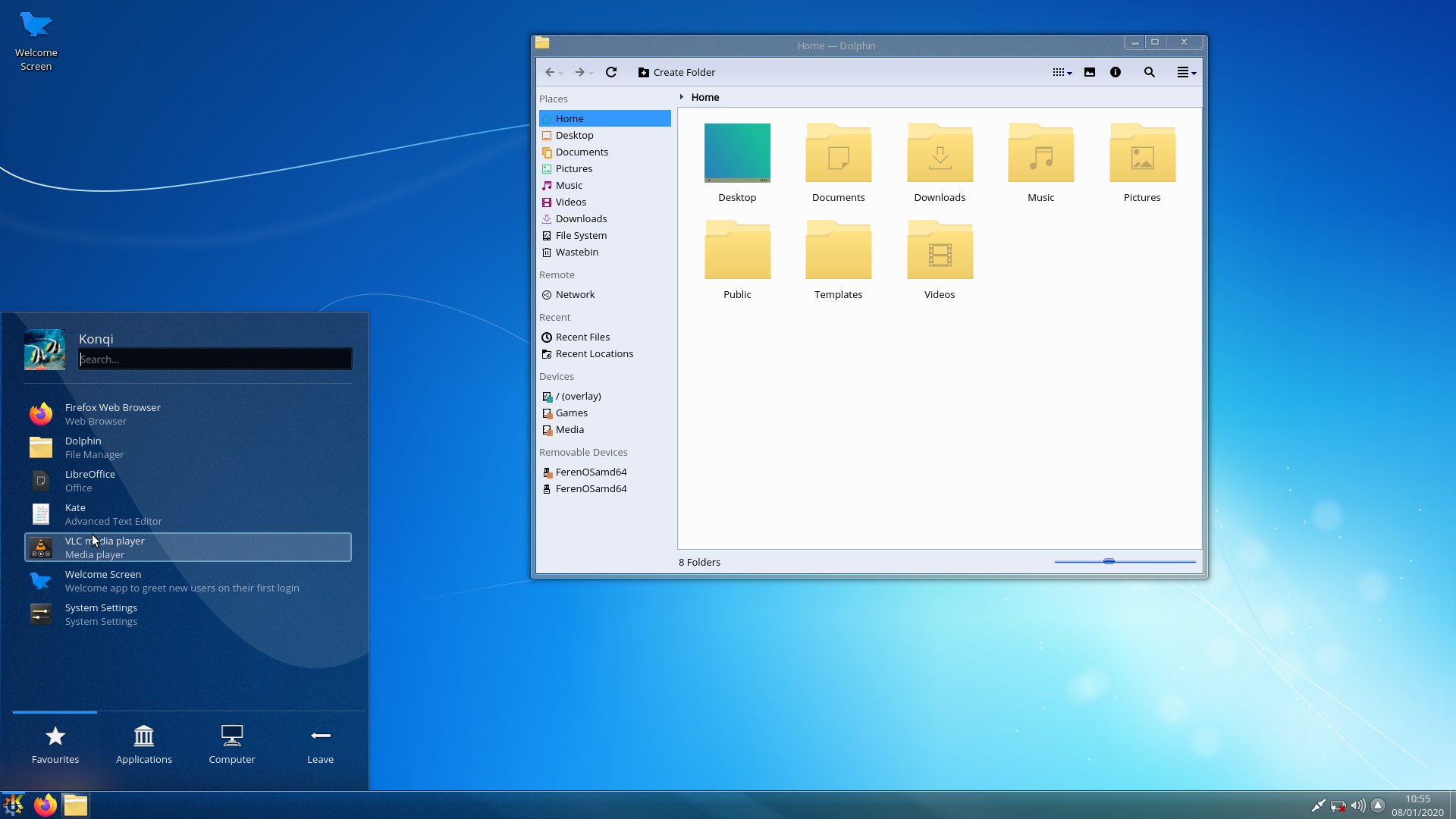Applications
-
KDE PIM Newcomers
(KDE)
With Akademy in full swing, we thought we'd treat you all on a conversation with a handful of newcomers to the KDE PIM team. The conversation took place both online over the last months and offline at Akademy yesterday. Let's start with introductions, in order of their replies.
Guy Maurel is French, almost 67 and retired. Having studied electrical engineering, he has seen the first coax cables forming an intranet and later managed DNS, mail and router systems following the growth of the IT industry. He's been using Linux for a while and when a student told him he should be contributing to Open Source, he decided to join KDE PIM.
Daniel Vrátil lives in Brno, Czech Republic and works at Red Hat, maintaining KDE on Fedora and working 'upstream'. He hacks on Telepathy, KScreen and recently became maintainer of the Akonadi framework. He's also the team lead of the local Akademy team this year!
Sandro Knauß is a 29 year old German who, since finishing studying physics, has been working as an IT freelancer. He's been in touch with KDE since he was 17, having used several distributions since starting with SUSE. When his current distribution (Debian) moved to KMail 2 he decided to join its development, fixing the crypto message part and getting hooked after that. He also hacks on ownCloud and maintains packages for Debian.
Michael Bohlender, Mike for the English speaking crowd, studied social anthropology with a minor in computer science. He initially started to contribute to Plasma Active and got into KDE PIM hacking through his GSOC project for developing a touch mail client. He's still mostly hacking on this client as well as QML components around mail data.
Scarlett Clark, hailing from Portland, USA, has been an avid Linux user since about 1998. She has a BA in Computer Information Systems and a background in System administration and web design. She's interested in learning more about technical writing and decided to put some effort into the documentation of her beloved OS. KDE PIM, and KMail in particular, is the lucky project she started with.
What are you up to now?
Sandro was first to explain more about what he's up to: "I was very interested in KMail 2 because I thought that the architecture with Akonadi is a very good approach. A friend of mine switched to KMail 2 two years ago and I was very disappointed about the crypto support. Then a year ago I had time and started to look at the code and searched for the bugs in the code. When I heard about the PIM sprint in berlin, I was very enthusiastic and hoped to find a person to help me fix the crypto stack. At the sprint Volker and I prepared one bug fix. The sprint motivated me to make the bug fix nice and shiny and I started to close a bunch of bugs in the crypto stack. In the long run I would like to make the crypto support as good and shiny as possible."
He added a call for help: "I'm looking for a UI Person, who likes to make the interface for sending encrypted messages better. Now, sending a crypto message requires clicking through up to five dialogs and I can't imagine that this can not be done better".
Things are now even more exciting for Sandro: during the course of this interview, he was employed by Kolab to work on the KDE PIM stack, including the libraries, UI, kolab-utils and so on. "For me it makes things easier to get paid regulary to work complety for an Open Source project. I'll hope both side will profit from my work: KDE PIM and Kolab".
Dan continued: "Most of the time I spend on KDE development is hacking on Akonadi - adding new features, improving speed and of course fixing existing bugs. Occasionally I'm improving the IMAP resource, usually when a bug gets into the way of my workflow I'm also maintaining Akonadi resources for integration with Google Contacts, Calendars and Tasks services and the library with Google API implementation, LibKGAPI. This is a special project for me, as it was my first code I contributed to KDE few years ago and through it I got involved with the awesome KDE PIM community".
Scarlett explains that she has moved on to doing packaging for Kubuntu: "I have been an avid Open Source user for 15 years, so I decided to find a place for me to become a contributor and hopefully with time, a career. Documentation seemed like a great entry point, so I jumped in and was received with a lot of kindness and help from the KDE team. While I still do some documentation, I have started packaging for Kubuntu and absolutely love it, so packaging > documentation right now and in the future".
KDE folk and Akademy
With the KDE Akademy Conference going on, it made sense to ask the interviewees about their thoughts around meeting KDE people.
Dan is part of the local team organizing Akademy this year. He "first attended Akademy in Tallin in 2012, to finally put faces to IRC nicknames. Meeting all the nice KDE people there was probably the main reason I decided to get more involved in KDE (PIM). I always enjoy meeting fellow KDE hackers on Akademy and various sprints and conferences, as it means lots of fun, hugs, beer and hacking (not strictly in this order ;-)) and builds these special relationships that make working on KDE pure pleasure for me."
Scarlett went from "I always would have loved to go to something like Akadamy, but being in the US makes it difficult to swing a trip like that" to "Courtesy of Ubuntu donors I am attending Akademy this year!". Her first day is over and she told us that it "is really awesome! I've talked to so many people that I worked with online..."
Sandro has already visited the Desktop Summit in Berlin in the past, describing it as "very amazing, to get in touch with all the people I read about. On the other side, it was hard to remember so many people, because I didn't know anyone before. When I wasn't shy to ask, the people were all very nice and chatty. It is much easier to get into touch with people at sprints, because there are less people".
Michael, also at Akademy, shared "the AGM meeting wasn't very exciting but the first conference day was awesome". Meanwhile, he is working on a new mail client, build on the KDE libraries and work that was done earlier to make Akonadi and KDE PIM ready for Frameworks. He has brought this idea up on the forums and has gotten help and mockups from the design and usability teams.
At Akademy, the PIMsters both new and old will be coming together at a KDE PIM BoF on Tuesday the 9th in room 4 and there'll be plenty of work and conversation going on for sure!
Dot Categories:
-
GNOME files defense against patent troll
(GNOME)
Orinda, CA – 2019/10/21 A month ago, GNOME was hit by a patent troll for developing the Shotwell image management application. It’s the first time a free software project has been targeted in this way, but we worry it won’t be the last. Rothschild Patent Imaging, LLC offered to let us settle for a high five figure amount, for which they would drop […]
-
Announcing Season of KDE 2020
(KDE)
By Caio Jordão Carvalho

After a one-year hiatus, KDE Student Programs is very happy to announce Season of KDE 2020!
Focused on offering an opportunity to anyone (not just enrolled students) contributing to the KDE community, this is a program that is comparable to the well-known Google Summer of Code, with some special differences. A key difference is that SoK projects are not limited to code-focused work, but any that benefit our community. For instance, projects can be about documentation, reports, translation, system administration, web and other types of work as well as code. Each contributor will work with a mentor and within a team that will also help the contributor.
Schedule
This year we have decreased the duration of the projects. Previously, all projects were 80 days long. However, during SoK 2018 we included the option of 40-day projects. This new option was widely adopted by participants during 2018 and, so we decided to keep only this alternative.
Timeline:
- From the 9th of December 2019 to the 3rd of January 2020: Participant and Mentor Application period
- 6th of January 2020: Projects announced
- 8th of January 2020, 00:00 UTC: SoK work period begins
- 17th of February 2020, 23:59 UTC: End of work
- 21st of February 2020: Results announced
- 28th of February 2020: Certificates issued
- Beginning of Q3 2020: Merchandise and Swag sent out by courier
Getting Started
Prospective participants should get in touch with us before the application period begins to discuss possible projects. You can connect with us on Matrix, in the #kde-soc room on IRC, in KDE-SoC on Telegram, or through our mailing list. Besides talking to the SoK team, contact the application maintainer and team with whom you want to work.
If you’re looking for project ideas, you can find some on our KDE Season of Code 2020 Ideas Page. Mentors please add ideas, so that we have a central repository of project ideas for Season of KDE 2020 and even GSoC 2020. Applicants will work with the teams to develop a proposal, and the SoK admin team will help too.
Help us spread the word! Tell your friends, blog, tweet, and share on Facebook using the #2020SeasonKDE hashtag.
Participants and mentors can apply here once applications open.
-
Apps Update for November
(KDE)

LabPlot
The big release this month has been LabPlot 2.7. LabPlot is fast becoming one of KDE's highest profile apps. It is an application for interactive graphing and analysis of scientific data. LabPlot provides an easy way to create, manage and edit plots. It allows you to produce plots based on data from a spreadsheet or on data imported from external files. Plots can be exported to several pixmap and vector graphic formats.
In this release we made the user experience while working with LabPlot easier and more fun. Entering and working with data in spreadsheets is slicker and when reading live data from file sources you can now use a relative path to find a live data source. This allows you to, for example, copy the folder containing the project file together with the data file or files across different folders on your computer without losing the connection to the file or files. In the Project Explorer you can now move top-level objects to different folders via drag & drop.
The data picker, which allows you to digitize data points on images, has had an overhaul in 2.7. The devs have greatly simplified the overall workflow and the process of digitizing data points as you can see in this video.
Check out the Labplot YouTube channel for more videos on using this advanced application.
Bugfixes
Alternative panel Latte Dock got a bugfix release, 0.9.4. It fixes autoloading in some distros such as Manjaro.
KDevelop is on its monthly bugfix release which tidied up CLang support for some distros.
Over 100 apps gets released as part of the KDE Applications bundle which has just had its 19.08.3 bugfix releases and includes:
- In the video-editor Kdenlive, compositions no longer disappear when reopening a project with locked tracks.
- Okular's annotation view now shows creation times in local time zone instead of UTC.
- Keyboard control has been improved in the Spectacle screenshot utility.
Snap Store
Snaps are one of the new container-based package formats for Linux. KDE has over 50 apps published on the Snap store and ready to be installed on almost any Linux distro. On many Ubuntu flavors and derivatives, they come ready to be used. On others you may need to use your package manager to install snapd first. This is usually as simple as running a command such as
sudo dnf install snapdorsudo pacman -S snapd. Most of KDE's Snap packages are built by the KDE neon team on their servers and the aim is to get packaging and building integrated more directly with app's repositories and continuous integration setups. This means they are updated more frequently and the moment changes are made so you always get the latest and greatest features and fixes.New this month in the Snap store is KDE's video editor, Kdenlive.
Coming Up
We have a couple of nice progressions towards stable releases from KDE apps. First, the mobile journey search app KTrip has moved into kdereview, meaning the authors want it checked over for sanity before making a stable release. In a first for KDE developer Nicolas Fella, he worked out how to get KTrip into F-Droid, the free software app store for Android.
Then, the developer tool ELF Dissector passed kdereview, meaning KDE has approved it as something we are happy to put our name on when it gets released. It's a static analysis tool for ELF libraries and executables. It does things like inspect forward and backward dependencies (on a library or symbol level), identify load-time performance bottlenecks such as expensive static constructors or excessive relocations, or size profiling of ELF files.
Help Out
By getting KDE's apps into the most popular of channels like the Windows Store, Google Play and F-Droid, we can reach more users and boost KDE's adoption through its software. Now that Kate is successfully shipping in the Windows Store, Kate developer Christoph Cullmann wrote a guide to Windows Store submission. Check it out.
KDE's All About the Apps Goal has loads of other things you can do to help get our applications to users, so come along and give us a hand.
-
GUADEC 2020 announcement
(GNOME)
The GNOME Foundation is excited to announce that GUADEC 2020 will take place between the 22nd – 28th of July in Zacatecas, Mexico. Zacatecas is a city and municipality in Mexico, located in the north-central part of the country. Set in a valley and surrounded by mountains, the city, which had its start as a […]
-
GNOME in 2019
(GNOME)
2019 represented an exciting year for GNOME with many things happening. GUADEC, GNOME’s biggest annual conference took in 2019 place in Thessaloniki, Greece while GNOME.Asia Summit (GNOME’s second major conference) was organized in Gresik, Indonesia. Both events were considered successful. In addition to the conferences, the community organized several Hackfests in different locations each gathering contributors […]
-
Libre Graphics Meeting Call for Proposals
(KDE)
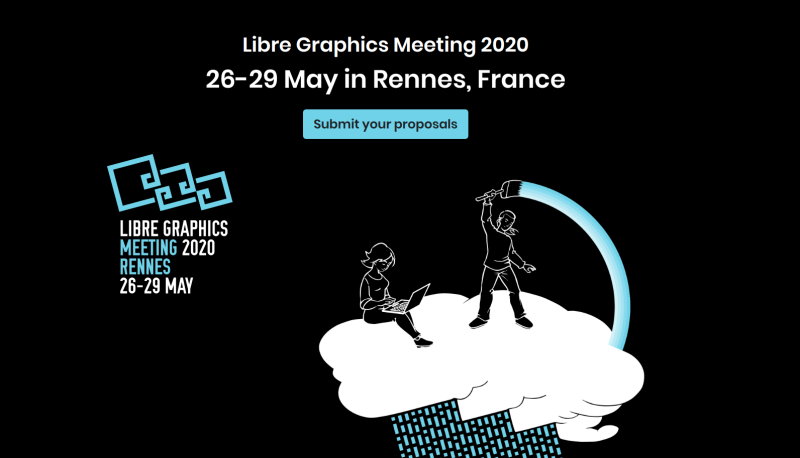
Update: sorry, the call for proposals is not yet ready, they are working on some technical fixes so please do not fill in the form yet. Watch out on social media for when it is ready.
The Libre Graphics Meeting (LGM) is the annual international convention for the discussion and development of free and open source graphics software.
This year it will happen in Rennes, France, from May 26th to 29th. We are welcoming all relevant projects to submit a proposal for a talk and/or a workshop. We already expect Krita and Kdenlive teams to be present. The Krita sprint will be held after the meeting and Kdenlive are planning to have a sprint around that time too. It would be awesome to also see some people from Plasma team working on graphics tablet support and color management, or any other topic of interest for developers and users of graphics creation application.
LGM are now asking for talks, workshops, BoF meetings and lightning talks for the conference. Please don't be shy and submit your proposal.
KDE e.V. has agreed to support the event by providing travel support to KDE contributors. If you are interested, make sure to file your reimbursement request before January 31st.
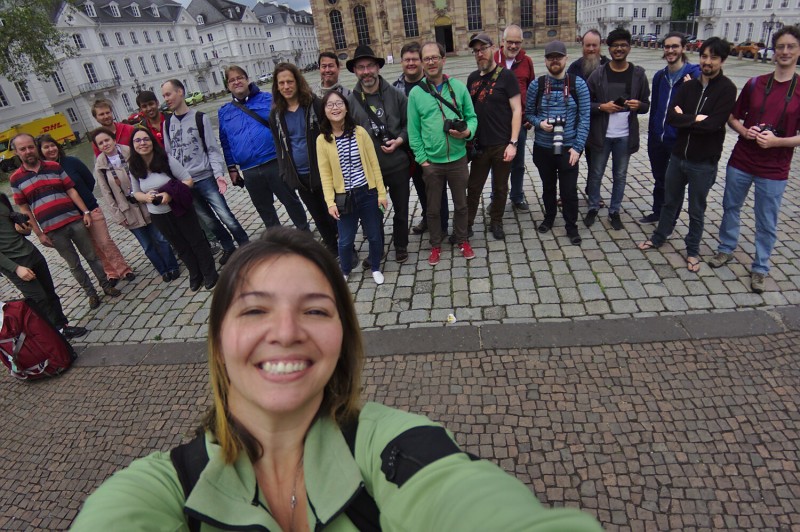
LGM 2019 -
Apps Update for December
(KDE)

Creating new applications is the easy part. Maintaining them, making them safer and faster and adding features that make them more useful to users is what marks the difference between one-shot wonders and solid tools you can trust and enjoy for years. That is why KDE developers are constantly renewing and updating their applications, making them more reliable, more useful, and in general, just better.
What follows is just a minor sample of what you can expect from the latest round of updates for applications made by the KDE community over the last month:
Calligra Plan is Back
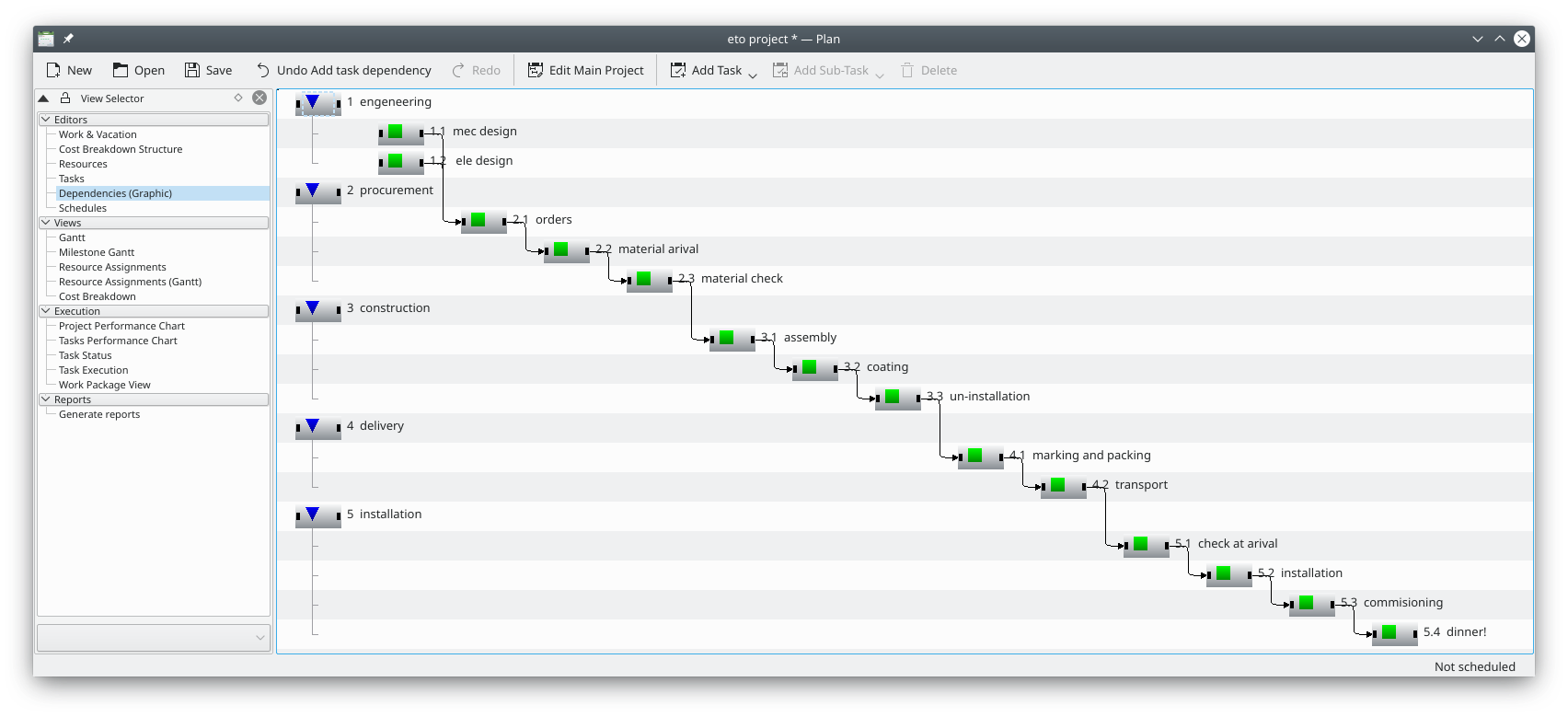
Calligra Plan lets you plan your projects in detail. Calligra Plan, KDE's project planning and management tool, gets its first big update in two years.
In case you were not aware, Plan helps you manage small and large projects which require multiple resources. In order for you to model your project, Plan offers different types of task dependencies and timing constraints. You can define your tasks, estimate the effort needed to perform each, allocate resources and then schedule the project according to your needs and the actual resources available.
One of Plan's strengths is its excellent support for Gantt charts. Gantt charts help you plan, coordinate, and track specific tasks in a project. Using Gantt charts in Plan you will be able to better monitor your project's workflow.
Kdenlive Pumps up the Volume

Kdenlive rocking a brand new audio mixer. Kdenlive developers have been adding new features and squashing bugs like crazy -- the latest version alone comes with more than 200 changes.
A lot of work has gone into improving support for audio. In the "bugs solved", department they have gotten rid of an error that would eat up memory. They have also made saving audio thumbnails much more efficient.
But the most exciting new feature is that Kdenlive now comes with a spectacular sound mixer (see image). Developers have also added a new audio clip display in the clip monitor and the project bin so you can better synchronize your moving images with the soundtrack.
Für Elisa
Talking of sound, Elisa is one of KDE's most popular up-and-coming music players. Elisa belongs to the deceptively simple, very light, very good-looking variety of players, with an intuitive and elegant interface and, in its latest version, Elisa has upgraded its looks even further to adapt better to High DPI screens. It also now integrates better with the looks other KDE applications.
Indexing music files has also improved and Elisa now supports web radios and comes with a few examples for you to try.
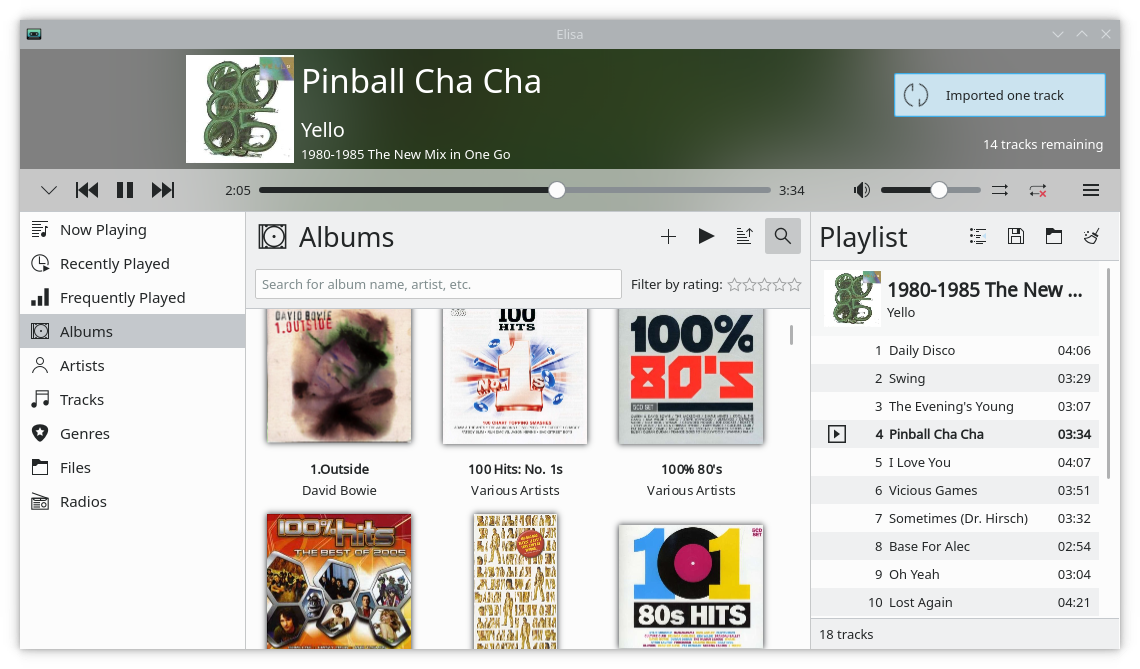
The Elisa music player.KDE Connect: Let Your Phone Rule your Desktop
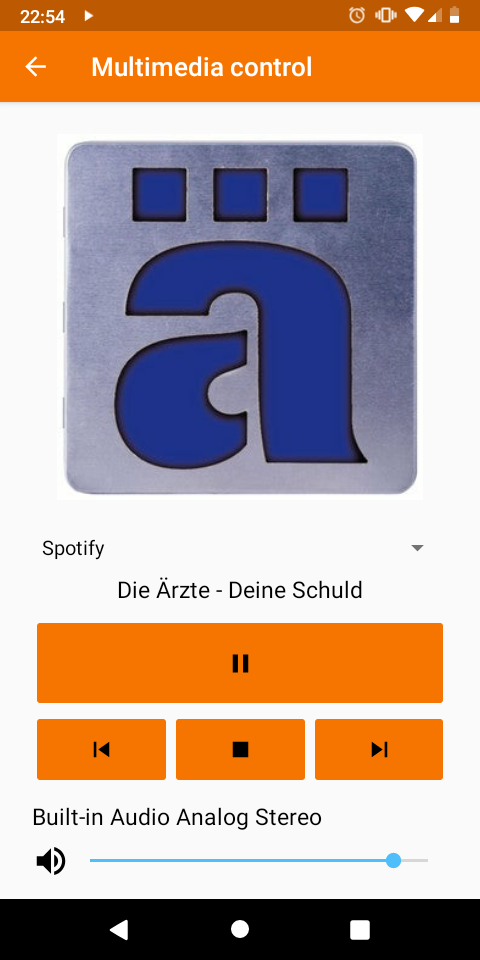
KDE Connect now lets you control
the global volume of your system.Most people who get to know KDE Connect, end up raving about it just because of how darned useful it is.
The latest version of KDE Connect packs even more features. One of the more noticeable is that there is a new SMS app that lets you read and write SMS from your computer with the full conversation history.
Developers are also adding new functionalities to existing features to make them even more useful. For example, you could already use KDE Connect to control the volume of media playing on your desktop, say, in VLC. But now you can use KDE Connect to also control your system's global volume from your phone. When giving a talk, you can control your presentation using KDE Connect to flip forward and back through your slides, and apart from integrating with other KDE apps, you can now also send files from Thunar (Xfce's file manager) and Elementary applications such as Pantheon Files.
Talking of other platforms, you can now run the mobile component of KDE Connect not only on Android, but also on all those mobile Linux platforms we'll be seeing in upcoming devices like the PinePhone and the Librem 5. The new version also provides features for desktop-to-desktop users, such as media control across desktops, remote input, device ringing, file transfers and running commands.
And Much More
But that is not all by any means: Dolphin, Spectacle, Okular and dozens of other applications have included new features you are sure to find useful. Even more projects, broaching apps, libraries and frameworks, have tweaked their code making them more stable and secure.
If you want to get an idea of the full range of changes, visit the official release announcement, or check out the changelog for every single detail of what has changed.
Getting applications made by KDE is also now easier: most are now available as Flatpaks, Snaps and AppImages. You just have to download them and they run straight out of the box. Many programs are also available for more platforms, such as Android, macOs and Windows. Krita and Okular have been available in the Microsoft Store for some time now, and they have recently been joined by Kile, a user-friendly LaTeX document editor.
Distributions will be updating their own repos and making the new versions available to Linux users over the next few weeks. Look out for your updates!
-
Linux Application Summit 2019 about start in Barcelona
(GNOME)
The GNOME Foundation is very excited that Linux Application Summit 2019 is about to start in Barcelona, Spain. Linux App Summit 2019 (or LAS) is a joint collaboration between GNOME and KDE which will feature 3 days of talks from prominent members of the Linux developer community on Tuesday 12th November to Thursday 14th November, […]
-
ATK, GTK, and Plans for 2020
(GNOME)
The GNOME Project is built by a vibrant community and supported by the GNOME Foundation, a 501(c)(3) non-profit charity registered in California (USA). The GNOME community has spent more than 20 years creating a desktop environment designed for the user. We‘re asking you to become Friend of GNOME, with a recommended donation of $25/month ($5/month […]
-
Linux Application Summit 2019 about to start in Barcelona
(GNOME)
The GNOME Foundation is very excited that Linux Application Summit 2019 is about to start in Barcelona, Spain. Linux App Summit 2019 (or LAS) is a joint collaboration between GNOME and KDE which will feature 3 days of talks from prominent members of the Linux developer community from Tuesday 12th November to Thursday 14th November, […]
-
KDE's January 2020 Apps Update
(KDE)
The year is 2020, we are living in the future, let’s see what KDE apps has brought us in the last month!
KTimeTracker ported to KDE Frameworks 5
The long-awaited modernized version of KTimeTracker is finally released.
The application is a personal time tracker for busy people which is now
available on Linux, FreeBSD and Windows. Over the course of 2019 it had been
ported to Qt5 and KDE Frameworks after being unmaintained since around 2013.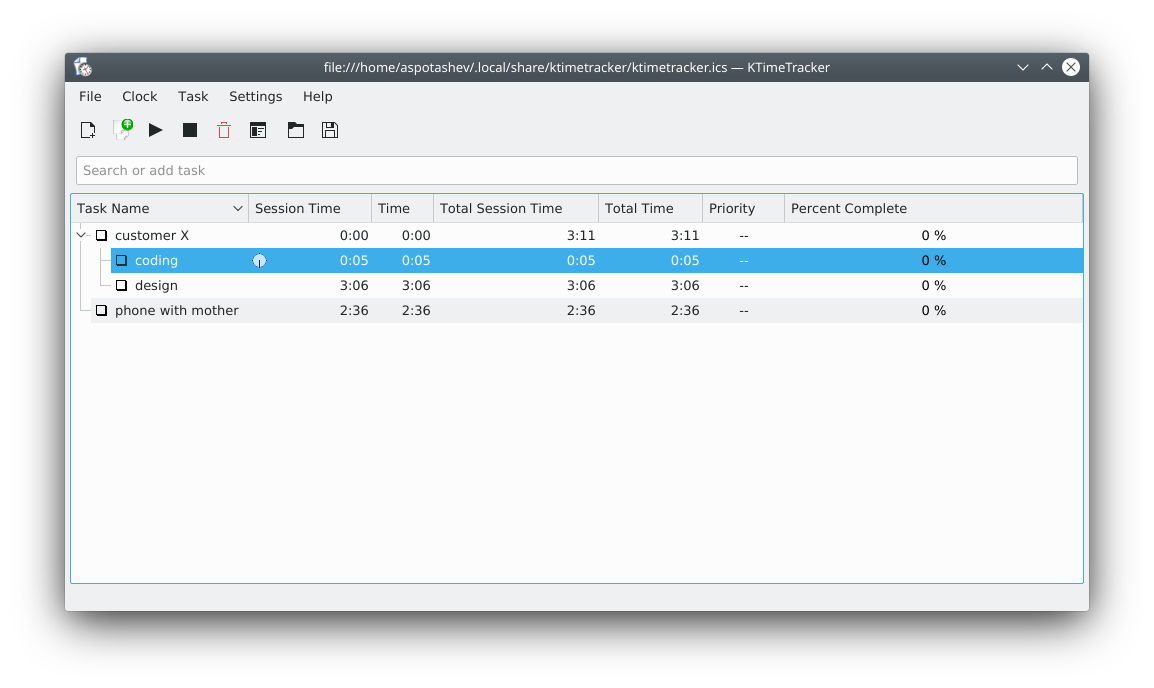
KTimeTracker The new version is also polished and slightly modernised with the most
noticeable new features being the new Task Time Editing dialog and
live preview in the Export dialog as seen in the picture below.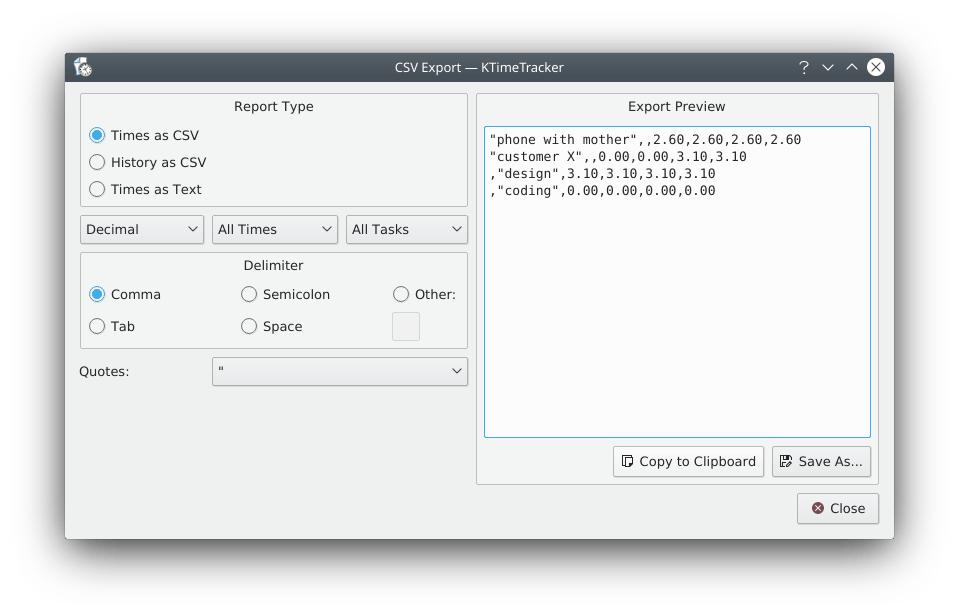
Export dialog in KTimeTracker https://download.kde.org/stable/ktimetracker/5.0.1/src/
It is available through your Linux distro or as a Windows installer and there’s even untested MacOS builds built nightly.The release is announced in the blog of the maintainer Alexander Potashev
KStars 3.3.9
Astronomy program KStars got new features in 3.3.9.
Images can have fine changes in Shadows, Midtones, and Highlights allowing the faintest of stars to be seen.
Alternative constellations from the Western Sky Culture which is fascinating to read about.
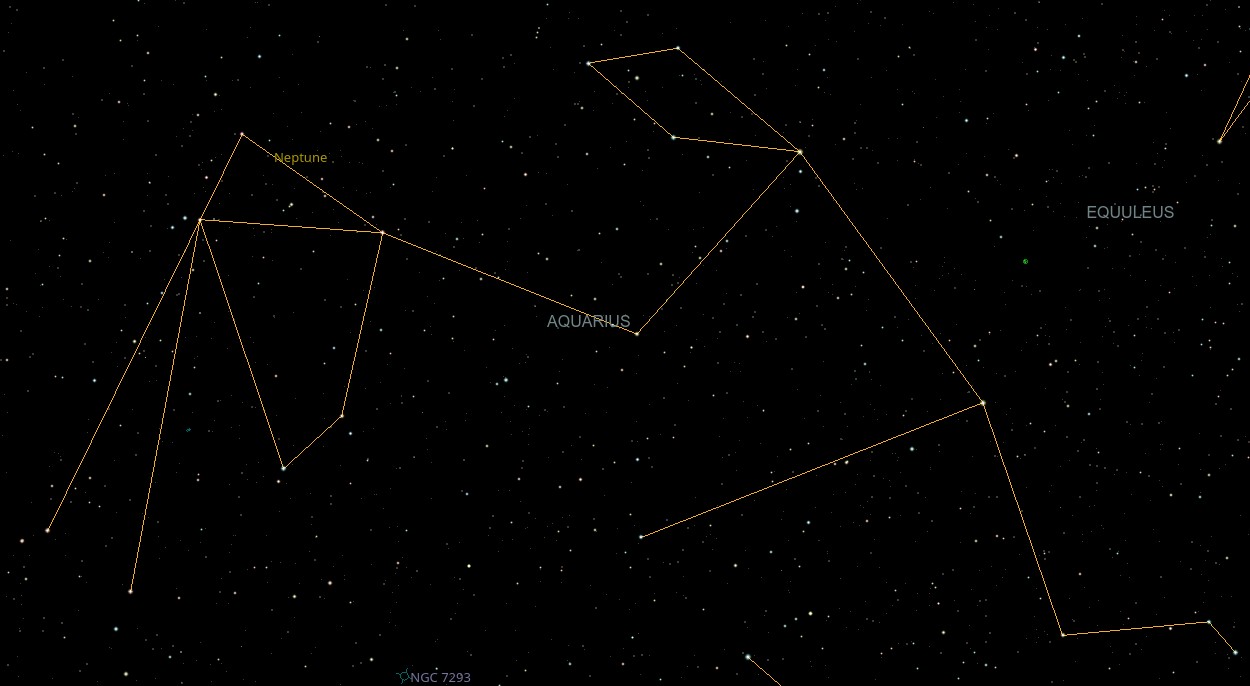
KStars is available for Android, Windows, MacOS, Snap store and from your Linux distro.
Common Frameworks - KNewStuff
Here on the Apps Update we focus on the apps rather than coding libraries. But new features in the common libraries will mean new features in all your apps :)
This month saw a redesigned UI for KNewStuff, the framework to download addons for your applications. The browse and download dialog was redesigned and the comments section can now be filtered. It’ll be appearing in all your apps and settings modules shortly starting with the Global Theme module in System Settings.
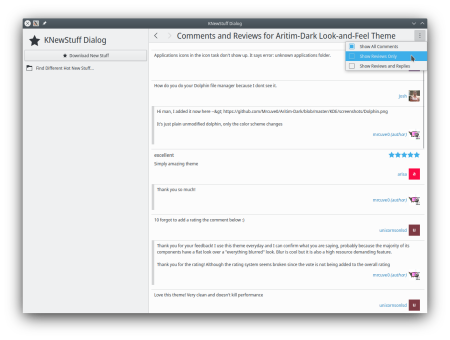
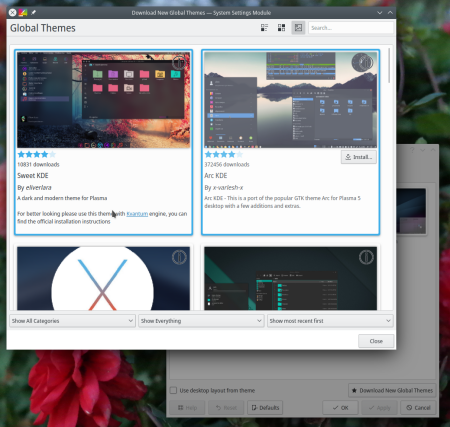
Bugfixes
KDevelop’s monthly bugfix update 5.4.6 fixed a longstanding problem where the GPL and LGPL headers were mixed up, grab it from your distro or Appimage to make sure your licencing is correct.
Latte Dock 0.9.7 fixed some features with Qt 5.14 and removed some crashes.
Dolphin Plugins 19.12.1 fixed a broken SVN Commit dialog.
There was improved file indexing in Elisa. It also fixed some compilation issues on Android and without Baloo.
The new release of KPat was declaired to have no OARS relevant age restrictions.
Okular fixed a crash when closing the print preview dialog.
This month’s release of Kdenlive video editor had an impressive number of fixes best of all was updating the screenshots used in the meta info. It also has dozens of improvements and fixes in timeline and preview handling.
New JavaScript support is now in Kate’s LSP client.
Enjoy KDE on the Flathub Store
KDE is embracing all the app stores. We can now deliver more and more of our programs directly to you the user. One of the leading app stores on Linux is Flathub which uses the FlatPak format.
You may well already have Flatpak and Flathub configured on your system and ready to use in Discover or other app installers. For example KDE neon has set it up by default on installs for over a year now. If not it’s a quick setup process for all the major distros.
If you’re interested in the techy details you can browse KDE’s Flatpak packaging repo and read the KDE Flatpak guide.
But probably what you’re interested in is the apps so take a look at what the Flathub store has under KDE.
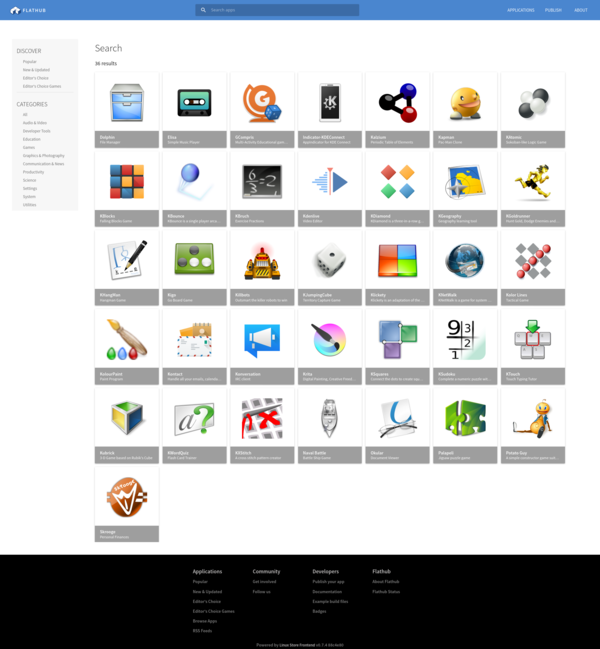
LabPlot now on Chocolatey
Chocolatey is a package manager for Windows. If you want full control over what software is installed on your Windows machine or whole office of machines then Chocolatey gives you easy control over that just like you are used to on Linux.
LabPlot is KDE’s app for interactive graphing and analysis of scientific data and it is now available through Chocolatey. Give it a try!
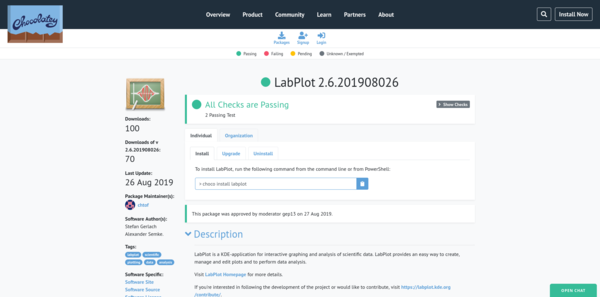
Website Updates
The recently revived KDE Web Team has been updating a bunch of our older themed sites. The newly relaunched KPhotoAlbum website is a lovely example, updated and refreshed for our photo storage and search app.
And if you want to show off a simple to use but full featured local music player but were ashamed by the old looking website, JuK has just had an updated website too.
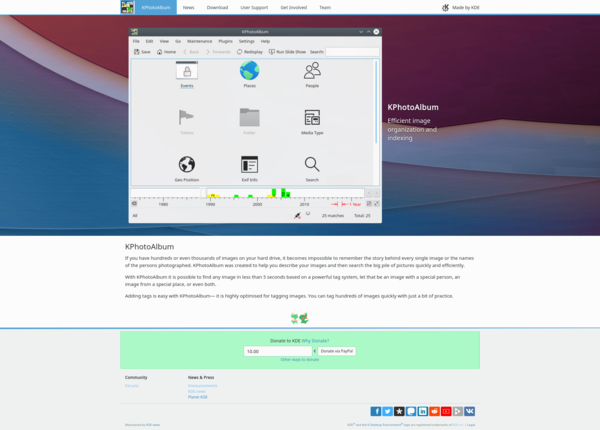
Releases 19.12.1
Some of our projects release on their own timescale and some get released en-masse. The 19.12.1 bundle of projects was released today and should be available through app stores and distros soon. See the 19.12.1 releases page. This bundle was previously called KDE Applications but has been de-branded to become a release service to avoid confusion with all the other applications by KDE and because it is dozens of different products rather than a single whole.
-
Translation Workshop in Indonesia this Weekend
(KDE)

The KDE Indonesia Community will once again hold a Kopdar (local term for BoF). This meeting is the second meeting after the successful meeting in 2018. The activity will be held this weekend with talks and activities about translating KDE software into Indonesian. The main event is for KDE fans in particular and Linux in general to collaborate in KDE translation.
The event will be held on:
Day: Saturday, 23 November 2019
Time: 19.00 (UTC + 7)
Venue: Midtrans Office Jl. Gandok Baru No.46, Sleman, Yogyakarta
Speaker: Wantoyek
Topic: The First Step to Becoming a KDE TranslatorThe purpose of this event is to invite KDE activists to participate in contributing to the community, especially as translators. The KDE Indonesia community also opens opportunities to donate activities for anyone who wants to support this activity, please contact Rifky Affand (rifki.affandi3@gmail.com). See you in DIY Yogyakarta, KDE lovers!
To register go to the registration form and join the KDE Indonesia Telegram channel.
-
GNOME AWS Sponsorship
(GNOME)
The GNOME Foundation wants to recognize AWS for donating credits that have allowed us (GNOME) to taking advantage of the multitude of services Amazon provides. In particular, the GNOME Infrastructure utilizes AWS S3 service as a file store for the multitude of Docker images that are generated or updated daily. GNOME uses GitLab as its […]
-
KDE Talk Videos from QtCon
(KDE)
QtCon talks are over, and today we start the discussion groups and hacking sessions to plan out work on the KDE community's projects over the coming year. If you want to learn what's going on in KDE technologies and community you can spend some time watching over the videos from the QtCon KDE talks.
-
GUADEC 2016 to happen from August 12–14 in Karlsruhe, Germany
(GNOME)
We’re happy to announce that the 2016 edition of GUADEC will be held in Karlsruhe, Germany from August 12–14, at the Karlsruhe Institute of Technology, a world-renowned research and educational institution. Karlsruhe is located in southtwest Germany near the Franco-German border and is nicknamed the “fan city” because its streets are built radially around the […]
-
Call for GNOME.Asia 2020 Summit proposals
(GNOME)
The GNOME.Asia Committee is inviting interested parties to submit proposals for hosting the GNOME.Asia Summit during the second half of 2020. GNOME.Asia Summit is the featured annual GNOME Conference in Asia. The event focuses primarily on the GNOME desktop, but also covers applications and the development platform tools. It brings together the GNOME community in Asia to provide […]
-
Consistency Update
(KDE)
By Niccolò Venerandi

It's been a month since Consistency was announced as an official goal for KDE at Akademy. During this time, we have focused on setting up all the tools needed to support the goal and tracking already active consistency tasks. Here's an update on what we have done so far and the main tasks we're working on.
Community Page
We have created a Consistency page on the community wiki where you can learn what the consistency goal is and find out how you can easily get involved in it. Check it out, regardless of your level of technical expertise!
Matrix Channel
There is also a Consistency channel on KDE's Matrix instance. Access it through the webchat page or at consistency:kde.org. You are welcome to come in and join us to discuss anything related to the consistency goal!
Sprint!
A sprint is in the works. If you would like to participate, join in the discussion and come and discuss the time and the place on the Matrix channel as well.
Phabricator Workboard
We created a Consistency workboard so you can track all the tasks and keep up with their development. You can add yourself as a member or watcher to receive Phabricator updates.
Tasks are organized into the following categories:
- Reported shows consistency problems that still need to be addressed, but are currently not being worked on, or are not actively developed yet
- VDG Discussion lists tasks that the VDG (Visual Design Group) are discussing
- HIG Specification shows tasks that are waiting for an HIG (Human Interface Guidelines) specification so they can be developed in a consistent way
- Under Apps Implementation you can find tasks that are actively being worked on
- Meta contains all the tasks that are not exactly consistency problems, but are related to the consistency goal in some way
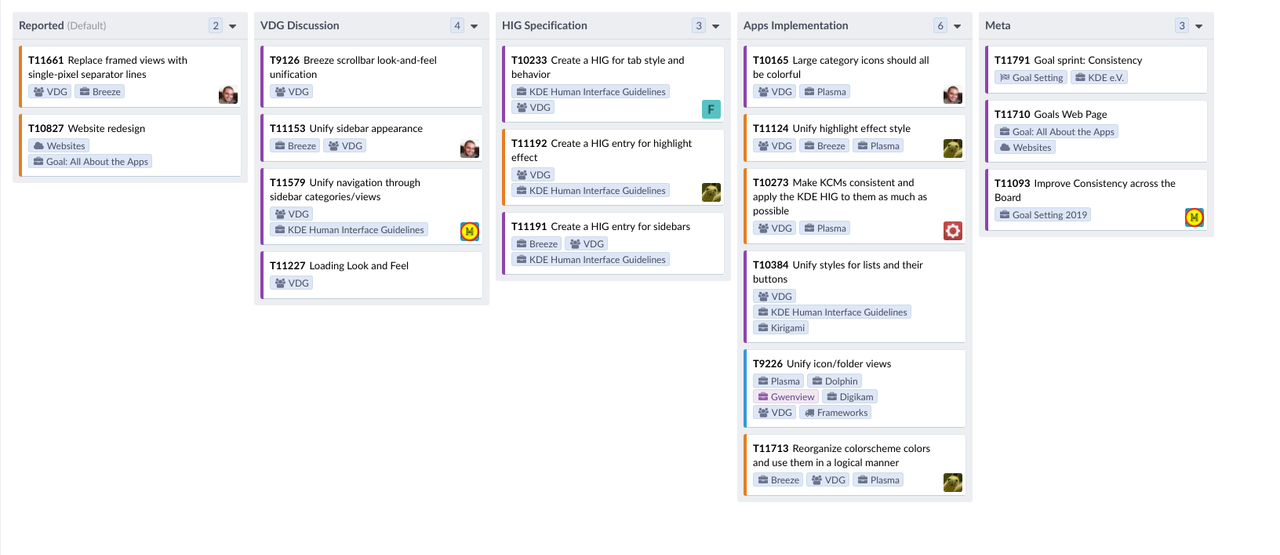
The Consistency goal's workboard.Consistency Tasks
There are already many tasks in the Consistency project. Some tasks are new, some existed before. Many of these tasks are quite interesting, so read on to get an idea of what lays ahead for this goal.
Unify Highlight Effect Style
This task was already in progress when the Consistency goal was selected, but it is nevertheless a great example of what we'd like to see happen in the goal.
Currently, Plasma has a discrepancy in its highlight effect. The first kind of effect is a plain rectangle using the highlight color, while the second one is a rounded rectangle with an outline and semi-transparent background. Although the former is more common, we think the latter is more appropriate to use in all situations.
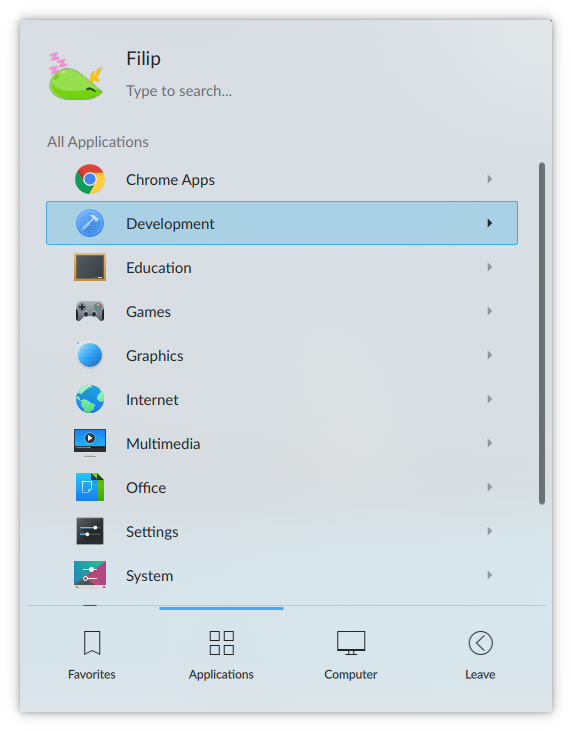
Here's the correct highlight effect in Plasma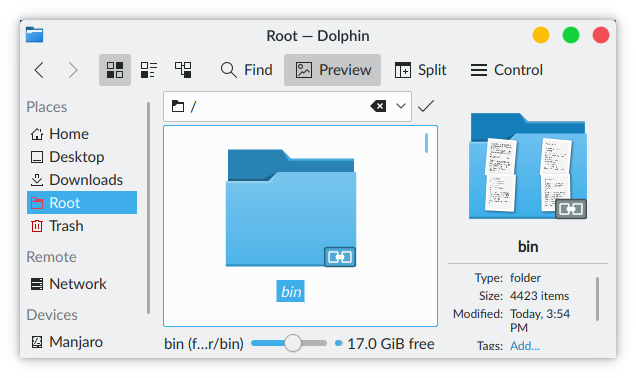
Here's what it looks like in Dolphin now.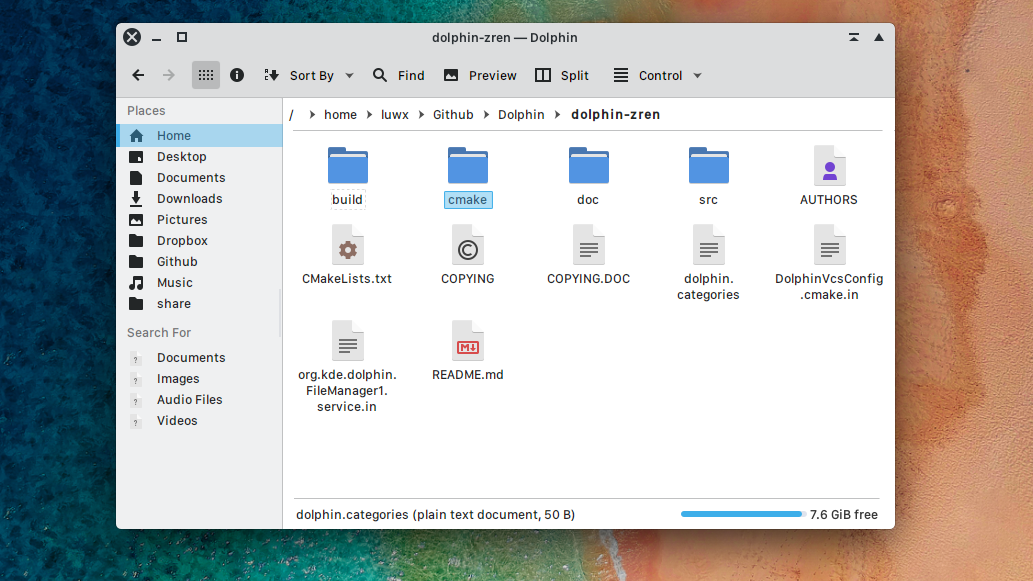
Dolphin mockup showing correct highlighting.A few more examples of what the new highlight could consistently look like in various use-cases:

Big icons sidebar highlight.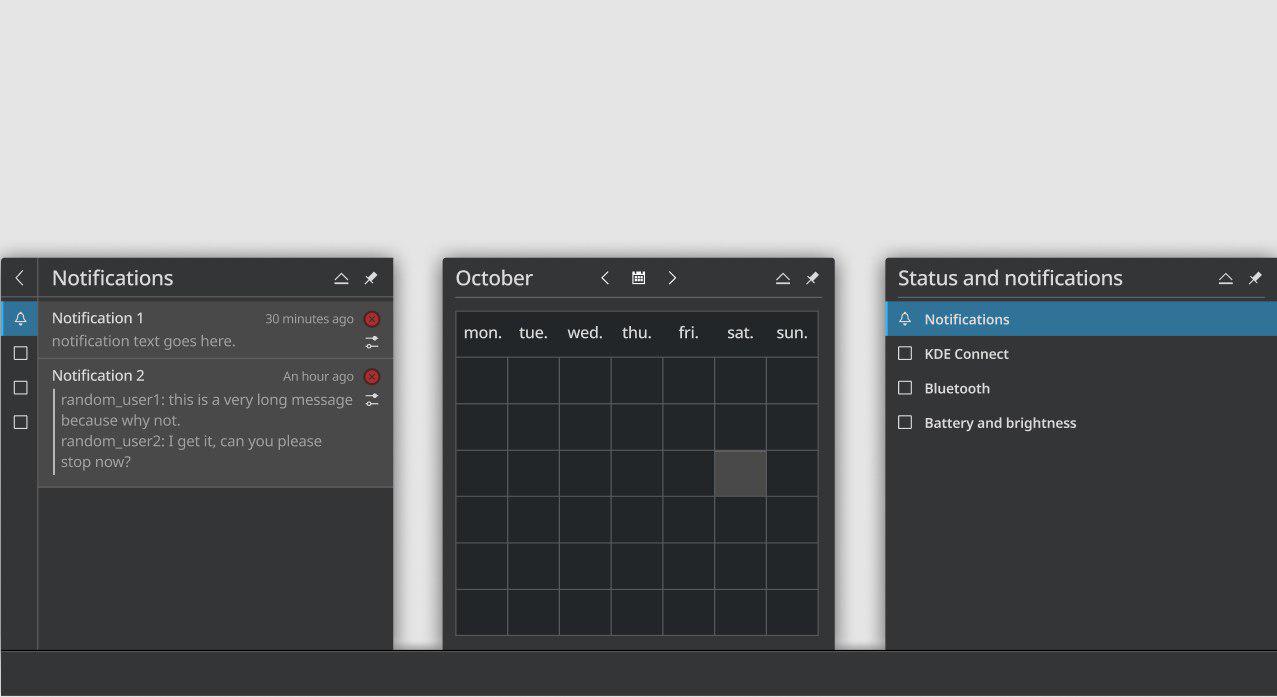
In plasmoids.
In menus.This is a great example of what consistency can be: not simply applying the same style everywhere, but finding something that a single app does very well, and bringing that to all the other apps. Noah Davis is actively developing this task, and he's doing a great job!
Unify Sidebar Navigation and Appearance
These tasks originated directly from the Consistency goal.
Sidebars are used in many applications and it would be great that they were consistent. There are two main aspects to this: the type of sidebar (system settings-like lists, big square icons, etc.) and the navigation within the sidebar (tabs, combo boxes, etc.).
What is the best solution? That part is currently under discussion. We welcome everyone's opinions on the matter or, even better, an expert assessment on the feasibility of each of the options.
Let's quickly illustrate some options:
For the sidebar appearance, the current main option relies on using lists and big square icons, depending on the number of elements:

Sidebars.On the other hand, the option for navigating sidebar views includes tabs that become icons-only when horizontal space is insufficient, vertical tabs on the left, and combo boxes:

Option 1.
Option 1b.
Option 2.
Option 3.Furthermore, Nate Graham is focused on making sure that all big icons displayed in sidebars are colorful. He has already fixed a lot of them, and only a few are missing that we know of. Finally, there's also a task to create an HIG specification for sidebars as soon as the discussion settles. We welcome help with any of these tasks. :-)
Website Redesign
This task was already ongoing when the Consistency goal was chosen and it aims to modernize old web pages that follow obsolete styles. There are many of them and some are well-hidden. Carl Schwan created and works on this task alongside many other contributors. Check it out and see if you too can find any old websites that need updating!
That's the end of this update!
If you would like to help out, come join us in the matrix room and let's make KDE software more consistent together!
-
conf.kde.in Is Coming Back In 2020
(KDE)
Join us for conf.kde.in from the 17th to 19th of January 2020 in Delhi, India.
conf.kde.in 2020 will focus on promoting Free and Open Source software, including (but not limited to) Qt and KDE products.
The Venue
conf.kde.in 2020 will be held in Maharaja Agrasen Institute of Technology, located in Rohini, Delhi, India. MAIT was established by the Maharaja Agrasen Technical Education Society and promoted by well-known industrialists, businessmen, professionals and philanthropists. The aim of MAIT is to promote quality education in the field of Technology.
MAIT endeavors to provide industry-relevant education and training through its well-crafted and practical training programs for the students in different semesters of their courses. The campus is composed of 10 blocks with a learning resource center. MAIT has been ranked as the 10th best private engineering institute in India by the Dataquest T-School Survey. MAIT always supports Free and Open Source communities and tech-related activities.
About conf.kde.in
conf.kde.in started in 2011 at RVCE in Bangalore as a 5-day event with 300 participants. This kicked off a series of KDE events in India. We held a KDE Meetup in 2013, and another conf.kde.in 2014 at DA-IICT. In 2015, the third conf.kde.in was held at Amrita University in Kerala, and in 2016 at LNMIIT Jaipur. The Jaipur conference attracted members of the KDE Community from all over the world. Attendees from different backgrounds came to meet each other, give talks, and share in the spirit of KDE. The 2017 conference was held in IIT Guwahati, Assam and sought to cater to new members of KDE, as well as to seasoned developers.
All of these events have been successful in attracting a lot of Indian students to mentoring programs such as Google Summer of Code (GSoC), Season of KDE, and Google Code-In.
conf.kde.in 2020 will generate even more interest and participation by creating a fertile environment for people to get started with KDE, Qt and FOSS through numerous talks, hands-on sessions and demonstrations.
Call For Papers
Join us! Submit a paper, explain the content for a 30-minute presentation or a workshop on any aspect of KDE, Qt or any other FOSS topic you want to cover, and become a conf.kde.in Speaker.
Remember to include all pertinent information about your background, other talks you've given, and anything else that gives a sense of what attendees can expect from your presentation.
See you in 2020 in India!
-
Step up and become a Friend of GNOME!
(GNOME)
The GNOME project is built by a vibrant community and supported by the GNOME Foundation, a 501(c)(3) non-profit charity registered in California (USA). The GNOME community has spent more than 20 years creating a desktop environment designed for the user. We‘re asking you to step up for GNOME and become Friend of GNOME. We're working to have 100 new Friends of GNOME join by January 6, 2020.
-
A KDE Love Story: Translating Kalzium into Chinese
(KDE)
Today is "I Love Free Software Day"!
We're celebrating by shining a spotlight on our contributors and on our collaboration with other FOSS communities and organizations. Free Software is an integral part of our lives, and it's important to show appreciation, support, and gratitude to everyone who works on making it better every day.
One of those people is Franklin Weng, a KDE contributor who started his Free Software journey by translating Kalzium. Franklin's contributions led him to amazing opportunities and projects. Read on to find out why he loves KDE so much.
Kalzium – The Start of An Amazing Journey
by Franklin Weng
When I was a high school student, chemistry was not my cup of tea. My grades in chemistry were not bad either, but I hated memorizing those organic compounds. Then, I decided to major in computer science at university, and from that moment, destiny tightly bonded me and Free and Open Source Software.
Around 2001 or 2002, I started to use and later contribute to KDE. However, Kalzium is the start of another amazing story for me. It happened in 2007...
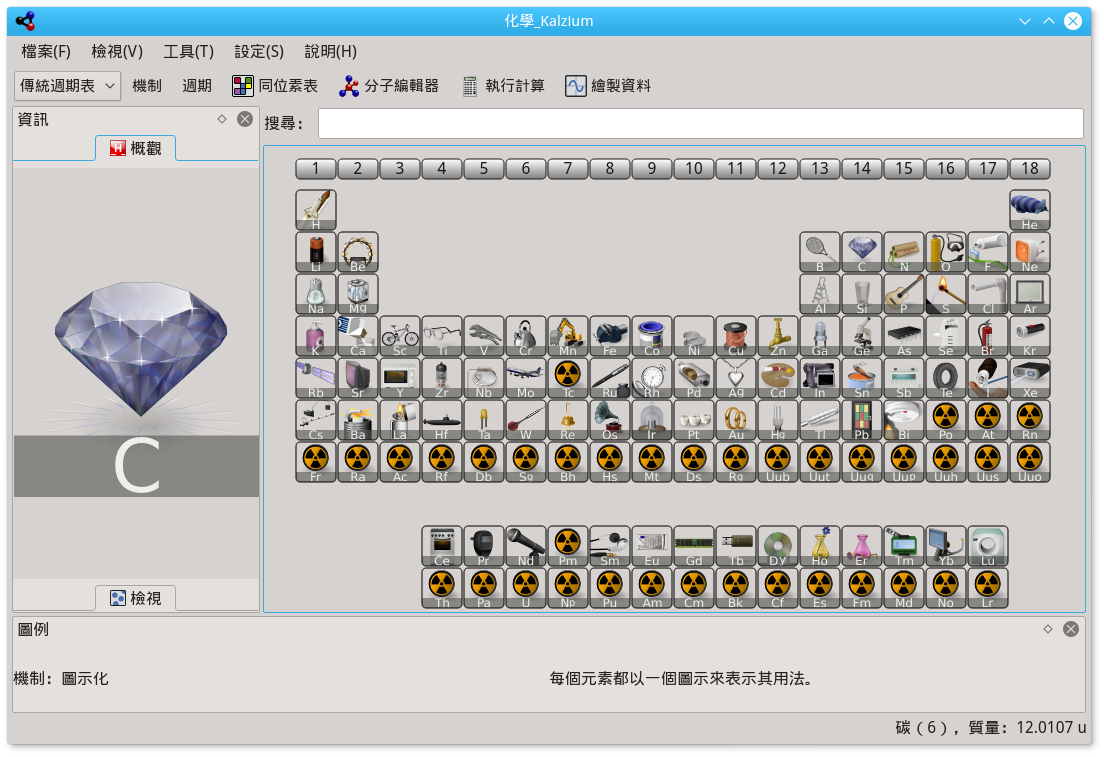
A throwback to the old look of Kalzium - in Chinese!I started translating KDE software around 2005. At the time, the Traditional Chinese language packages had almost been abandoned by KDE because of the very slow translation rate. Some senior FOSS community members called to others to "save" Traditional Chinese, and finally we did. From that moment on, I kept translating KDE because I simply asked myself: "Since I'm using this desktop environment, why not do it?"
So I translated everything in KDE. Everything. I started with KMail because I wanted a mail client that would reside in my system tray. Then I translated more KDE PIM applications, KDE Multimedia, KDE Graphics, KDE Games,... even KOffice. And of course, KDE Edu applications - from the simple, lovely ones, like KTuberling, KTouch, and KHangman, to huge ones like KStars and KGeography (that last one is enormous). Kalzium was just another one for me; I even translated KMyMoney - without any accounting background.
Then in 2007, I got an email.
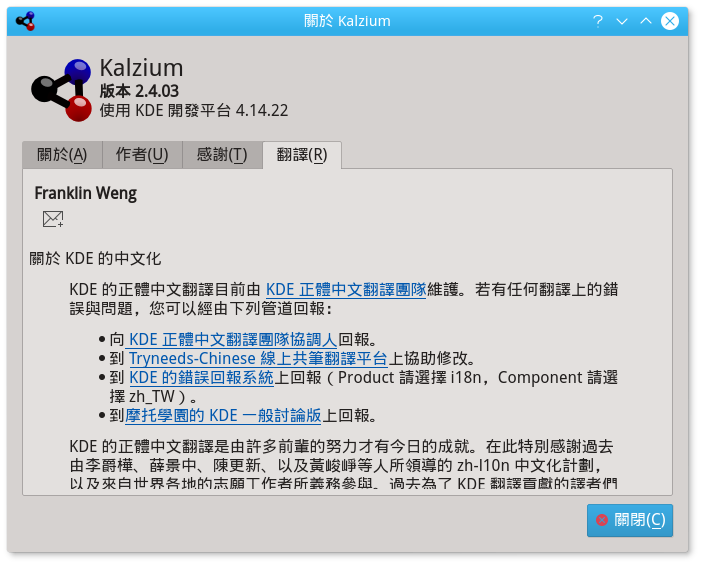
Franklin's credits as the translator of the app."I saw you translated the Kalzium software. Could we meet and talk about that?"
That email was from my now friend, Eric Sun, who was (and still is) the Executive Secretary of the Open Source Software Application Consulting Center (OSSACC), a project launched by the Ministry of Education in Taiwan. The project promotes free software for use in primary and high schools. At first I had no idea why this guy would like to meet me. Would he discuss chemistry with me? I wasn't a chemistry-aholic at all!
We met at a Burger King in Taipei. He introduced himself and told me about his idea, which made me appreciate him a lot! He, as the Executive Secretary and also an FOSS enthusiast like me, wanted to introduce educational Free Software applications to teachers and students to help them acquire knowledge from many different fields, without any financial cost.
To promote those Free Software applications, the first step is, of course, to localize them. Teachers and students, especially in primary schools, would never accept software with English interfaces. He noticed that there had been some software with Traditional Chinese translations, and he was curious about who did it. Bingo! It was me.
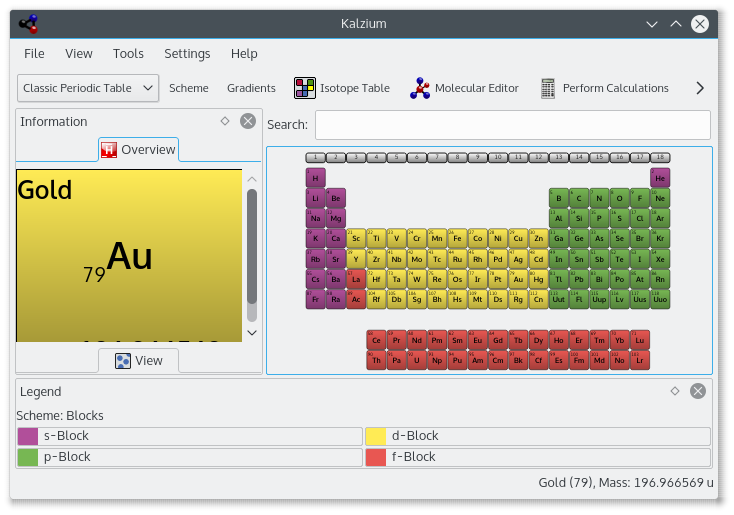
This is what Kalzium looks like these days.We started a series of plans. The main plan was a customized Linux distribution named ezgo - which I have already introduced here in October of 2013.
After that, we have also done a lot of work together, mostly introducing public domain educational resources, including FOSS to schools. I became one of KDE e.V. members and the president of the BoD of Software Liberty Association Taiwan, an NPO which promotes FOSS in Taiwan. In recent years, we have helped Taiwan governments to migrate to LibreOffice and ODF.
Thinking about the past 10 amazing years on the road of promoting FOSS, the start point was that I translated Kalzium. Of course, I wasn't aware that contributing translations to KDE would give me such an amazing tour in my life. Nevertheless, I always use this as an example to tell my young friends in Taiwan: "See? Chemistry is not my thing, but translating Kalzium (and many other KDE applications) made my life wonderful!"
Big thanks to Franklin for contributing to KDE for so many years, and for spreading the word about our software and its educational potential!
Do you have a story about how you fell in love with KDE? Let us know in the comments!
-
Keeping the (server) lights on
(GNOME)
The GNOME project is built by a vibrant community and supported by the GNOME Foundation, a 501(c)(3) nonprofit charity registered in California (USA). The GNOME community has spent more than 20 years creating a free desktop environment designed for the user. We‘re asking you to join us by becoming Friend of GNOME. The GNOME Foundation […]
-
Announcing KDE Plasma 5.18 Wallpaper and Video Contests
(KDE)
By Niccolò Venerandi

KDE wants you to create the next wallpaper for Plasma 5.18 and the promotional videos for Plasma and applications of KDE.
The chance of getting your work seen by thousands of people and organizations worldwide, including at NASA and CERN, is within your grasp! You can also win some really astounding prizes courtesy of our friends at TUXEDO Computers.
Prizes
The winner of the wallpaper contest will have their work included as the default background on KDE's upcoming Plasma 5.18 desktop. This means you will not only earn the admiration of thousands of Plasma users, but you can also win a very cool TUXEDO InfinityBook Pro 14 computer.
More details about the InfinityBook Pro are available on the Wallpaper Contest's page.
Is fillmmaking more your thing? Try your hand at shooting and editing an exciting promotional video for Plasma or for applications KDE makes. The winners of the best Plasma promotional video will win a TUXEDO Gaming PC, and if you win the best Applications video competition, you'll get a TUXEDO InfinityBox.
You can read about the specs of each machine on the Video Contest's page.
Twelve finalists will also receive a package of goodies containing among other things:
- A KDE Baseball cap
- A plush Tux
- KDE Stickers
- A frozen glass coffee mug
How to Participate
Taking part is easy! Check out the rules for Wallpaper Competition and send in your masterpiece. Remember that, in order to submit a wallpaper, you need to follow the link to the appropriate subforum where you can create a new post. You can also find suggestions and helpful material on the webpages.
Want to make a video instead? Read the rules for the Video Competition carefully and start shooting your clip!
We can't wait to see what you will create!
-
GNOME Asia Summit 2019 to take place this weekend in Gresik, Indonesia
(GNOME)
GNOME Asia Summit 2019 will take place this weekend in Gresik, Indonesia. The main focus is primarily on the GNOME desktop, but also applications and platform development tools are covered. The summit brings together the GNOME community in Asia to provide a forum for users, developers, foundation leaders, governments and businesses to discuss the present […]
-
GNOME acknowledge AWS Sponsorship
(GNOME)
The GNOME Foundation wants to recognize AWS for donating credits that have allowed us (GNOME) to taking advantage of the multitude of services Amazon provides. In particular, the GNOME Infrastructure utilizes AWS S3 service as a file store for the multitude of Docker images that are generated or updated daily. GNOME uses GitLab as its […]
-
Mycroft AI on Plasma
(KDE)
Did you know you can install an AI personal assistant on your Plasma desktop?
Mycroft is running through the last 24 hours of the crowdfunding campaign for its Mark II assistant. The machine looks awesome and offers similar functionality to other proprietary alternatives, but with none of the spying and leaking of personal data.
The Mark 2 will be delivered to backers at the end of this year, but you can enjoy the pleasures of giving orders to an AI right now by installing the Mycroft widget on Plasma courtesy of KDE hacker Aditya Mehra.
As the widget is still experimental software, the installation is currently slightly cumbersome. The users have to build it from source and write to directories that should usually be accessible only to the administrator account. The widget also uses Python 2, which is a bit old at this stage.
However, a little dicky bird from openSUSE has told us that they are solving these issues, migrating the software to Python 3 and packaging RPMs. They said they will have packages for Tumbleweed *maybe* as early as next week.
Enjoy being an overlord to the AIs while you can.
-
Plasma: A Safe Haven for Windows 7 Refugees
(KDE)
Microsoft will stop providing updates for Windows 7 on January 14 2020.
There won't be any more patches that correct bugs or even dangerous vulnerabilities. This will leave Windows 7 users exposed to all sorts of bad stuff. But that is not a huge concern for Microsoft. With this move, Redmond hopes to encourage users to upgrade to Windows 10.
But why should we care? Maybe because Windows currently holds 77% of the global desktop market share (all Linux desktops combined hold less than 2%). Of that 77%, nearly 30% belongs to Windows 7. That is nearly a billion people still holding on to Windows 7 because they are resisting the move to Windows 10. Apart from the natural human resistance to change, Windows 10 has earned a bad rap as an operating system that will gladly leak your data back to Microsoft and lace your desktop with intrusive advertisements as a matter of course.
Helping people regain control over their systems and protecting their data is precisely what Free Software communities do best, making this the perfect opportunity to help Windows 7 users upgrade to something much better: To the Plasma desktop!
How you can help
We need you to help convince Windows 7 users to move to the Plasma desktop. We have set up a task where we are brainstorming ideas, advice and resources. You can contribute your thoughts too. Get your KDE Identity today and join the conversation.
You can also join the Promo team live on Matrix and help us run this campaign.
Or fly solo! Talk to your friends, family, classmates and colleagues. Even if you convince just one person to make the transition to any Linux-based system, you will have done something valuable and helped the FLOSS movement.
The Windows 7-like theme shown above was put together (from many parts created by many generous contributors) by Dominic Hayes, creator of Feren OS, a cool-looking Ubuntu-based Linux distro aimed squarely at end users. Check it out!
Dominic used the following elements to re-create the look and feel of the desktop:
Plasma Theme: Seven Black
Window Decorations: Seven Black
Application Style: gtk2
GTK Theme: Windows Se7en by Elbullazul
Icons: Darkine
Colours: Breeze Light
Cursors: DMZ White
Splash Screen: Feren OS
Panel: 38 height
Widgets: Default Apps Menu, I-O Task Manager, Stock System Tray, Feren Calendar or Event Calendar, Win7 Show Desktop -
Conf.kde.in 2017
(KDE)
Carrying on the successful tradition of conf.kde.in since 2011, we are moving to the north-east region of India for this year's conf.kde.in. Join us for conf.kde.in 2017 on 10, 11, and 12 March at Guwahati in Assam, India. conf.kde.in 2017 will focus on the promoting Free and Open source including but not limited to Qt and KDE software.
The Venue
Event will be held at IIT Guwahati, Assam. IIT Guwahati is the sixth Indian Institute of Technology established in the India by the Government of India. Indian Institute of Technology Guwahati's campus is on a sprawling 285 hectares of land on the north bank of the river Brahmaputra around 20 km from the heart of the city. With the majestic Brahmaputra on one side, and with hills and vast open spaces on the other, the campus provides an ideal setting for learning.

IIT Guwahati
About conf.kde.in
conf.kde.in started in 2011 at RVCE in Bangalore as a 5 day event with 300 participants, initiating a series of such KDE events in India. There was a KDE Meetup in 2013 and conf.kde.in 2014 at DA-IICT, in 2015 at Amrita university, Kerala, in 2016 at LNMIIT Jaipur, which brought in members of the KDE Community from all over the world to attend the event, give talks, and share the spirit of KDE. The 2017 conference will cater to new members of KDE as well as seasoned developers, providing updates about what is going on in the KDE Community and teaching newcomers how to start making meaningful contributions. These events have been successful in attracting a lot of Indian students to mentoring programs such as Google Summer of Code (GSoC), Season of KDE and Google Code-In.
This year, the conf.kde.in 2017 organizers intend to generate even more interest and participation by creating a fertile environment for people to get started with KDE, Qt and FOSS through numerous talks, hands-on sessions and demonstrations.
Call For Papers
If the event seems exciting and valuable, this is an opportunity to join in.
Submit a paper explaining the content for a presentation of not more than 30 minutes on any aspect of KDE, Qt or other FOSS topic that you want to cover. Please include pertinent information about your background, other talks you've made (if any), and anything else that gives a sense of what attendees can expect from your presentation. The organizers await your innovative proposals, and are looking forward to an abundant gathering of the KDE Community.
If you want to talk at conf.kde.in please head to call for papers page
Dot Categories:
-
KDE releases Kirigami UI 2.0
(KDE)

Today, KDE announces the public release of Kirigami UI 2.0 !
All issues that were identified during the ten days of beta testing have been fixed, and Kirigami 2.0 is deemed ready for general use.
Soon after the initial release of Kirigami UI, KDE's framework for convergent (mobile and desktop) user interfaces, its main developer Marco Martin started porting it from Qt Quick Controls 1 to Qt Quick Controls 2, the next generation of Qt's ready-made standard controls for Qt Quick-based user interfaces. Since QQC 2 offers a much more extended range of controls than QQC 1, the port allowed the reduction of Kirigami's own code, while improving stability and performance. Kirigami 2 is kept as close to QQC 2's API as possible in order to extend it seamlessly.
Beyond the improvements that the port to QQC2 brings, further work went into Kirigami 2's performance and efficiency, and it also offers significantly improved keyboard navigation for desktop applications. On Android, Kirigami 2 integrates better visually with Material Design.
Of course there are also smaller improvements in various places, such as better handling of edge swipes in the SwipeListItem or more reliable activation of the Overscroll / Reachability mode (which pulls down the top of the page to the center of the screen where it can be reached with the thumb).
Discover (Plasma's software center), a quite complex application, has already been ported successfully to Kirigami 2 without much hassle, so we are confident that most applications can be ported easily from Kirigami 1 to Kirigami 2. Since Kirigami 2 requires Qt 5.7, which is not available on all Linux distributions yet, Kirigami 1 is still maintained (receiving fixes for critical bugs) for the time being, but won't receive any new features or improvements.
You can get Kirigami 2.0 via its wiki page, or from your distribution's repository as soon as it is packaged there.
If you want to try it out on Android, the Kirigami Gallery demo app is available on Google Play. -
GNOME Foundation partners with Purism to support its efforts to build the Librem 5 smartphone
(GNOME)
Orinda, CA/San Francisco, September 19, 2017 – The GNOME Foundation has provided their endorsement and support of Purism’s efforts to build the Librem 5, which if successful will be the world’s first free and open smartphone with end-to-end encryption and enhanced user protections. The Librem 5 is a hardware platform the Foundation is interested in […]
L'actualité de cette partie est agrégé automatiquement à partir d'autres sites.
Contenus ©2006-2024 Benjamin Poulain
Design ©2006-2024 Maxime Vantorre
